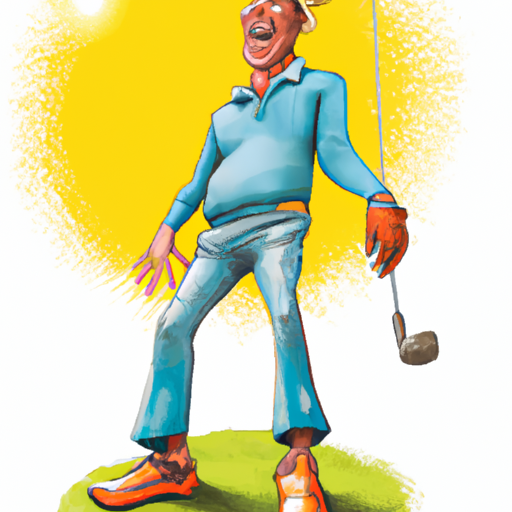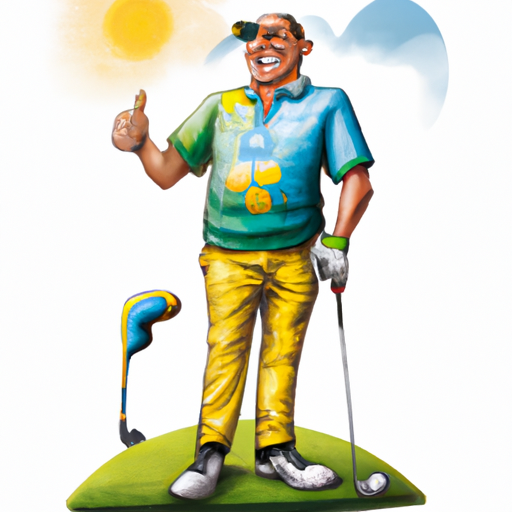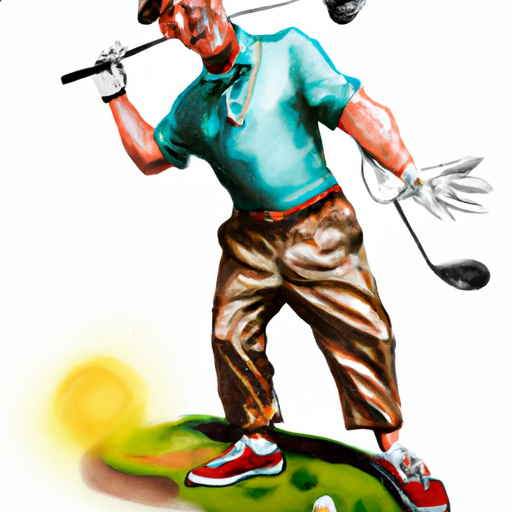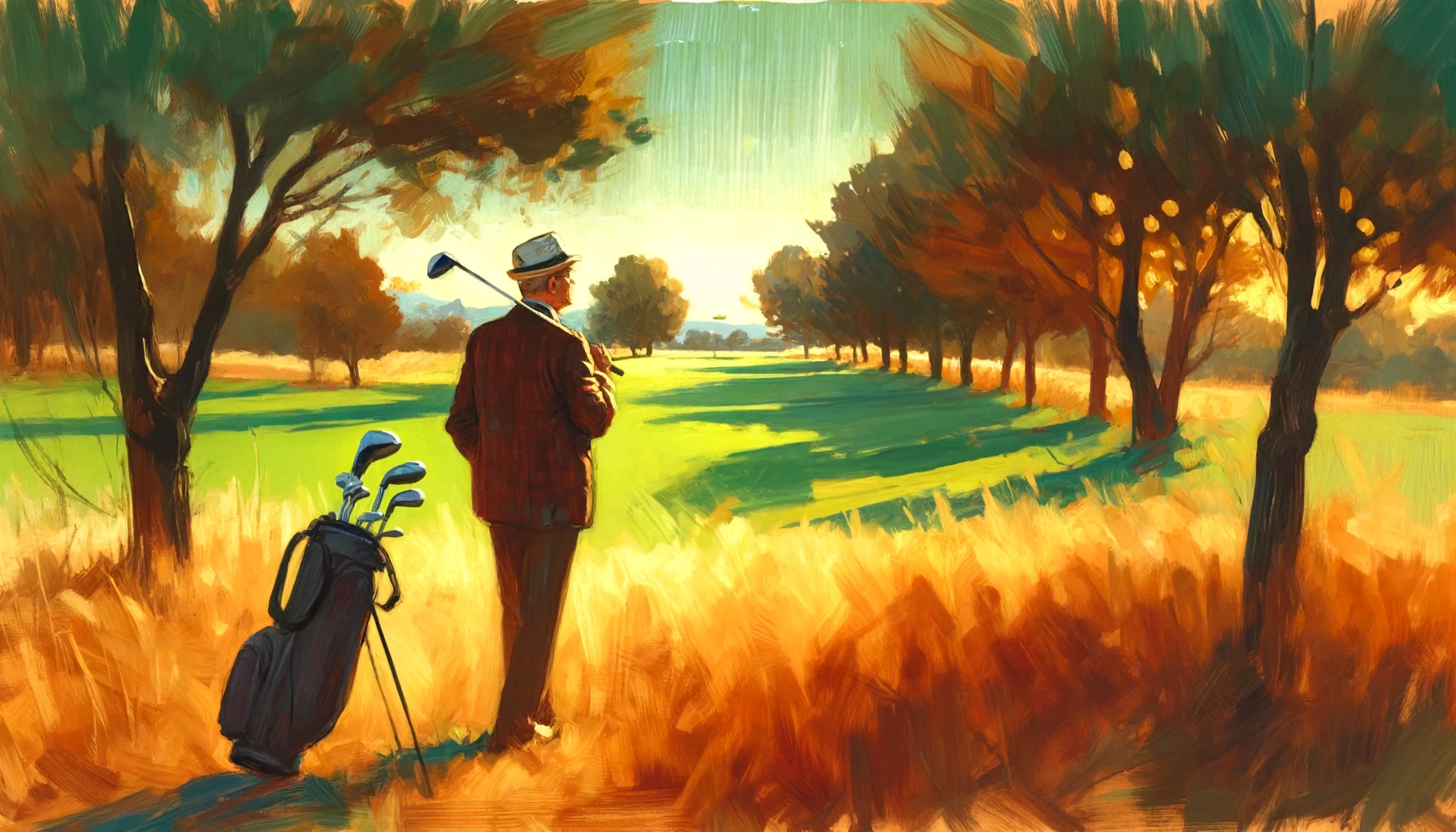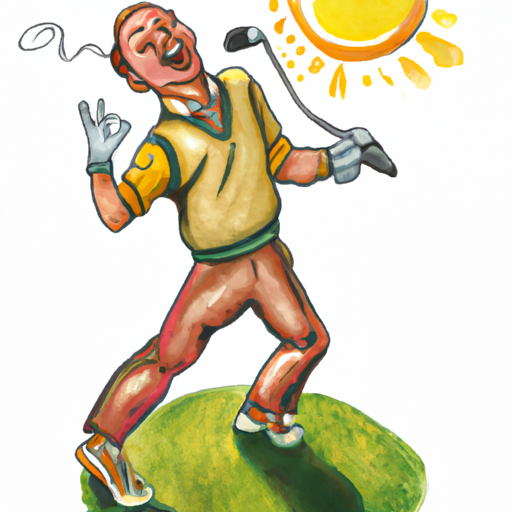- Home
- Moe Norman
- Problems With a One Plane Golf Swing
Mastering the Game: Unraveling the Problems with a One Plane Golf Swing
Golf, a game of precision and technique, is often a battleground of strategies and styles. One such style that has gained popularity among golfers is the one plane golf swing, even though there is considered to be some problems with a one plane golf swing by some.
However, like any technique, it comes with its own set of challenges.
This article delves into the problems with a one plane golf swing and offers solutions to overcome them, helping you improve your game and live up to the Golfeaser Manifesto.
Understanding the One Plane Golf Swing
The one plane golf swing is a technique where the golfer's arms and shoulders move on a single plane around the body.
This swing style is known for its simplicity and consistency, making it a favorite among many golfers. However, mastering it requires a deep understanding of its mechanics and potential pitfalls.
The Pros and Cons of a One Plane Golf Swing
Like any golf swing technique, the one plane golf swing has its advantages and disadvantages.
Pros:
Simplicity: The one plane swing is relatively simple to understand and execute.
Consistency: Once mastered, it can lead to more consistent shots.
Cons:
Inconsistent Ball Striking: Some golfers struggle with inconsistent ball striking when using a one plane swing.
Lack of Power: There can be a perceived lack of power in the one plane swing, especially for those used to a two plane swing.
Directional Issues: Right-handed golfers may find a tendency to hit shots to the right.
Common Mistakes in a One Plane Golf Swing
Several common mistakes can hinder the effectiveness of a one plane golf swing. These include:
Timing Issues: The one plane swing relies heavily on timing. If your timing is off, you risk a two-way miss.
Incorrect Positioning: Proper body positioning is crucial in a one plane swing. Incorrect positioning can lead to poor shots and potential injuries.
Improving Your One Plane Golf Swing
Improving your one plane golf swing involves understanding these common mistakes and working to correct them.
Here are some tips:
Work on Timing: Practice your swing to improve your timing. This can be done at the driving range or even at home with a practice net.
Correct Your Positioning: Work with a golf instructor or use video analysis tools to ensure your body is correctly positioned during the swing.
The Golfeaser Manifesto and the One Plane Golf Swing
The Golfeaser Manifesto, a guiding principle for weekend golfers, emphasizes improving one's game, hitting long drives, impressing buddies, and earning bragging rights. By mastering the one plane golf swing, you can live up to these principles.
Here's how:
Improving Your Game: By working on the problems associated with a one plane swing, you can improve your overall game.
Hitting Long Drives: A well-executed one plane swing can result in long, accurate drives.
Impressing Your Buddies: As you improve, your golfing buddies are sure to be impressed by your newfound skills.
Earning Bragging Rights: With improvement comes the right to brag. As your one plane swing gets better, so does your golf game, earning you bragging rights in the clubhouse.
However, most of us don’t use the one plane golf swing but instead a more traditional one. But the choice is totally up to you…
Conclusion
While the one plane golf swing can present certain challenges, understanding these problems and working to correct them can significantly improve your game.
Remember, every golfer's swing is unique, and what works for one person may not work for another. So, experiment with different techniques, practice consistently, and find what works best for you.
Key Takeaways
- The one plane golf swing is a popular technique known for its simplicity and potential for consistent shots.
- Common problems with a one plane golf swing include inconsistent ball striking, lack of power, and a tendency to hit shots to the right for right-handed golfers.
- Common mistakes made when executing a one plane golf swing include timing issues and incorrect positioning.
- Improving your one plane golf swing involves working on your timing, correcting your positioning, and consistent practice.
- Mastering the one plane golf swing can help you live up to the principles of the Golfeaser Manifesto, improving your game, hitting long drives, impressing your buddies, and earning bragging rights.
Remember, golf is a game of patience and practice. With the right approach and dedication, you can overcome the problems associated with a one plane golf swing and become the golfer you aspire to be.
Happy golfing!
Frequently Asked Questions about Problems with a One Plane Golf Swing
What are the common problems with a one plane golf swing?
What are the common problems with a one plane golf swing?
The common problems with a one plane golf swing include difficulty with timing and tempo, limited power and distance, difficulty with shot shaping, difficulty with consistency, limited flexibility and mobility, inconsistent ball flight, difficulty with chipping and short game shots, difficulty with driver and long irons, and a tendency to miss left.
How can I improve timing and tempo in a one plane golf swing?
How can I improve timing and tempo in a one plane golf swing?
To improve timing and tempo with a one plane swing, it's important to focus on establishing a consistent rhythm and sequencing in the swing. This means taking a smooth, fluid backswing and then transitioning smoothly into the downswing, allowing the club to drop into the slot naturally.
Why does a one plane golf swing limit power and distance?
Why does a one plane golf swing limit power and distance?
The one plane swing is more compact and doesn't rely as much on wrist hinge and release, which limits the potential for generating clubhead speed and distance. To improve power and distance, focus on generating rotational power through the body, using the hips and lower body to initiate the downswing and generate torque.
Why is shot shaping difficult with a one plane golf swing?
Why is shot shaping difficult with a one plane golf swing?
With a one plane swing, the clubface tends to stay more square to the target throughout the swing, which can make it harder to curve the ball or adjust for wind and other conditions. To improve shot shaping, experiment with different grip and setup positions that can help adjust the clubface at impact.
How can I improve consistency with a one plane golf swing?
How can I improve consistency with a one plane golf swing?
To improve consistency with the one plane swing, it's important to develop a repeatable swing motion that can be relied on from shot to shot. This means focusing on a consistent setup and alignment, as well as establishing a consistent pre-shot routine.
Why is the one plane golf swing challenging for golfers with limited flexibility and mobility?
Why is the one plane golf swing challenging for golfers with limited flexibility and mobility?
Because the one plane swing requires a more compact, flatter motion, it can be difficult to execute for golfers who have restrictions in their shoulder or hip mobility. To improve flexibility and mobility, incorporate exercises and drills that target these areas.
Why does the one plane swing lead to inconsistent ball flight patterns?
Why does the one plane swing lead to inconsistent ball flight patterns?
The one plane swing can lead to inconsistent ball flight patterns, particularly if the golfer is struggling with timing, power, or shot shaping. To address inconsistent ball flight, it can be helpful to work with a golf instructor who has experience with this swing method.
Why is the one plane swing challenging for chipping and short game shots?
Why is the one plane swing challenging for chipping and short game shots?
The one plane swing can be challenging for golfers when it comes to chipping and short game shots, as the flatter, more compact swing motion may not be well-suited for these shots. To improve chipping and short game shots, develop a versatile short game that can be adjusted for different situations.
Why is the one plane swing not well-suited for hitting driver and long iron shots?
Why is the one plane swing not well-suited for hitting driver and long iron shots?
The one plane swing may not be well-suited for hitting driver and long iron shots as these shots require more power and distance than the one plane swing may provide. Some golfers may choose to develop a separate swing for hitting driver and long iron shots.
Why is there a tendency to miss left with a one plane golf swing?
Why is there a tendency to miss left with a one plane golf swing?
A common issue with the one plane swing is a tendency to miss shots to the left for right-handed golfers due to the flatter swing plane and less wrist hinge and release. To address this problem, golfers can make adjustments to their setup and alignment.




